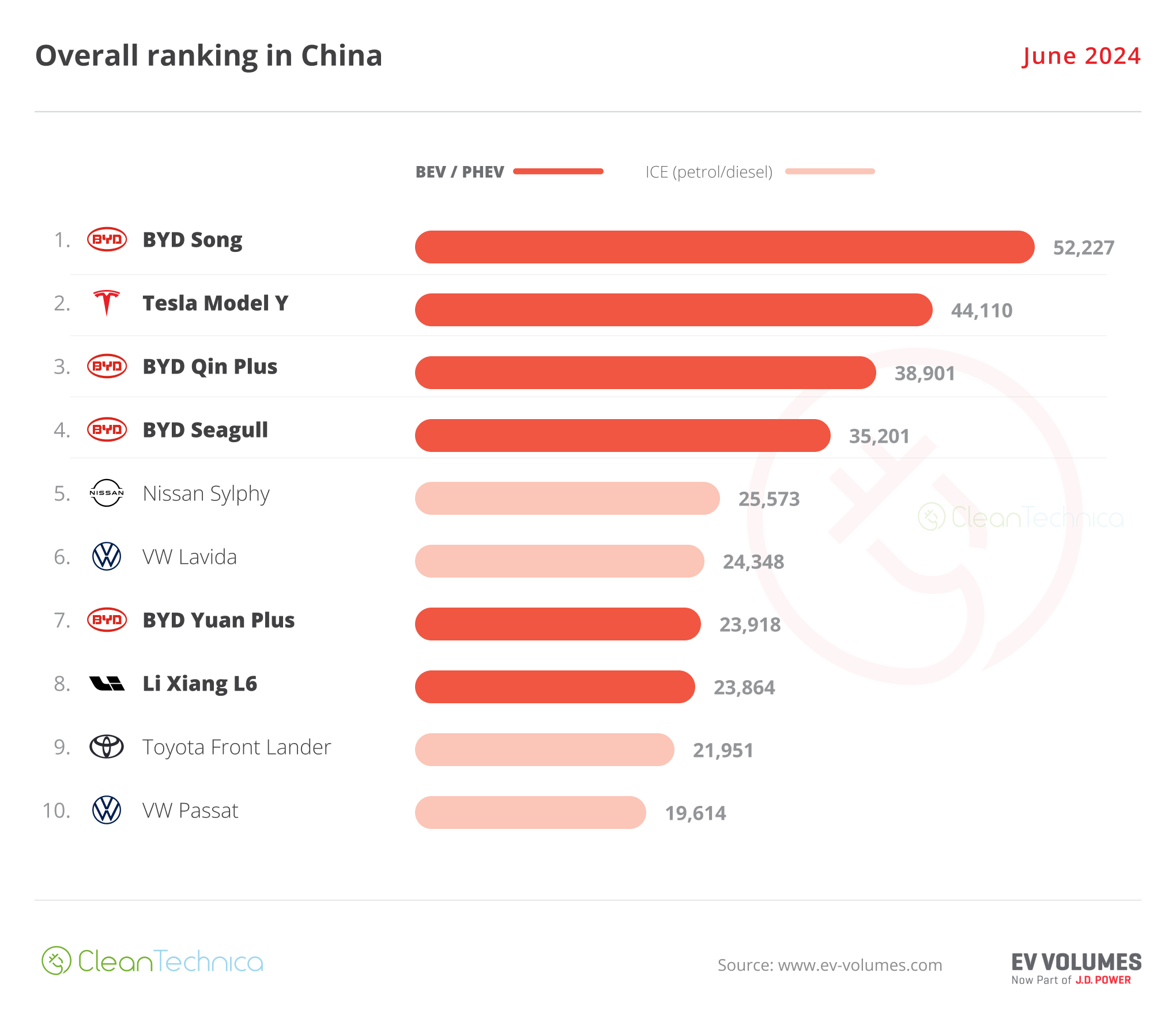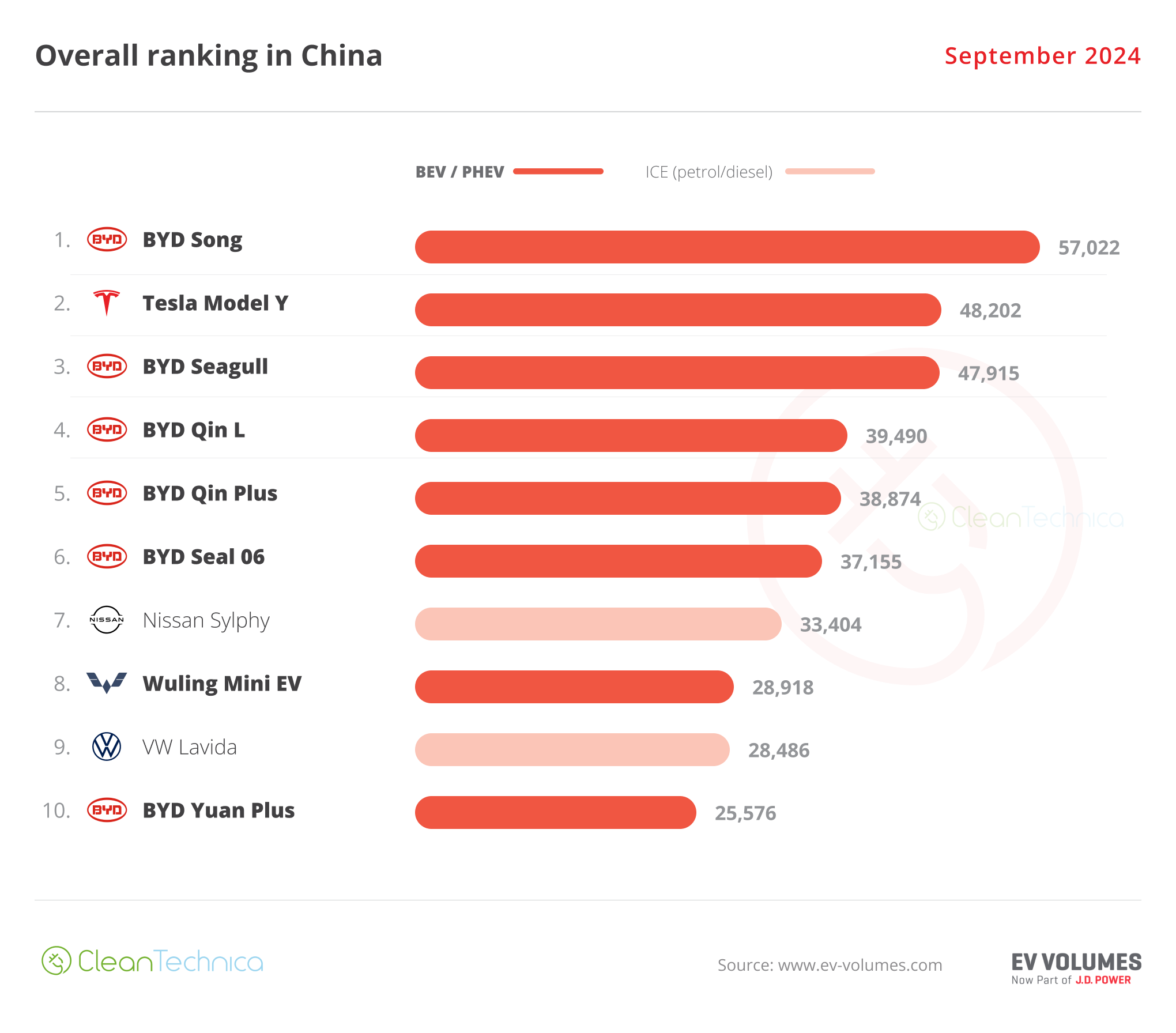
This is the second part of a two-part look at the EV revolution around the world and which countries are leading it. Part 1 can be found here.
By Assaf Oron
Bronze Medal! Norway (2nd in 2021) — 72 Points
When you’re beginning to approach 100% passenger EV market share, you’re close to maximizing your score — unless you start branching out into other aspects of the EV revolution. Norway, longtime EV share leader and perennial silver medalist here (except for Gold in 2020 and a retroactive co-Gold in 2014), is starting to face this challenge. Its passenger+LCV share increased last year only from 75% to 79%, vs. a 12% increase in 2021. As Max Holland keeps reminding us, it’ll be hard to close in on 100% without more affordable supply. Also, the LCV segment was still not catching up fast enough, with 23% share (vs. 17% in 2021).
After a year’s lull, Norway resumed serious bus electrification efforts, with ~300 deployed BEVs, which, per IEA, was nearly half of the new buses delivered in the country. But Norway’s main score boost last year was actually thanks to launching Europe’s largest (to date) EV battery recycling plant. In my humble opinion, every country from a few million people upwards should have one of these eventually. That factory is a joint venture between Norway’s Hydro, and …
Silver Medal! Sweden (4th in 2021) — 73 Points
… Sweden’s Northvolt. Northvolt, Hydro’s partner in the Norwegian recycling plant, is the main reason for Sweden’s first-ever silver medal. In 2022, its long-awaited Ett (One) battery plant started delivering EV batteries to automakers. This is a huge step forward: unless I’m mistaken, Northvolt is the only major EV battery maker headquartered (and with its core operations) outside of East Asia. This has landed Sweden a bunch of points, in addition to its own market share advancing the most last year in its world-leading region of Scandinavia, from 41.7% to 51.5%.
The EV output from Volvo Cars (a Geely subsidiary) increased ~60% in 2022. Its bus output had a modest rise, but BEV truck action went Big Leagues last year, rising >3× over 2021, with Volvo claiming that it now leads both the European and North American electric truck markets.
This is the kind of well-rounded performance we need from industrial nations in order to defeat Big Oil once and for all. Of course, all Sweden has been doing is taking a page or two from the entire book already written by …
Gold Medal! China (1st in 2021) — 95 Points
Mind the gap. Yes, 22 points, just like last year, separate China and the silver medalist. Not only does it have world-dominating volumes — with ~6 million EVs deployed domestically and many hundreds of thousands exported — but its EV share nearly doubled from 15% to >29%. Put another way, the volume increase in EV sales in China accounted for about two-thirds of the total global increase.
Recently, and quite belatedly, the footprint-research world has “discovered” that electrification of low-speed 2- and 3-wheelers may have displaced far more oil demand than all electric cars/buses/etc. combined. Where are all these e-cycles and e-tuktuks/rickshaws rolling around that we haven’t noticed them till now? Far and away, most e-bikes are found in China. The IEA says that massive bike electrification has been going on there since the late 1990s. While I am not 100% convinced all low-speed electric 2-wheelers should be jotted down as “footprint reduction” (did they displace fossil-guzzling traffic, or just plain ol’ bicycles?), 3-wheelers are in fact a form of public transit and totally qualify, and China has millions of these as well.
At the other end of the fleet, the IEA reminds us that similar to prior years, China deployed ~80% of the world’s new e-buses last year and ~85% of new e-trucks, while also supplying other nations much/most of their own deployment. Last but not least, China’s closing in on 70% of the global EV battery output (in terms of kWh), and that tally might actually exclude the heavy-vehicle part, where its share is even higher.
In short, I will need to recalibrate my score next year, otherwise China’s likely to blow through 100, easily. And the rest of the world will need to level up, stat.

Notable Mentions
Positive
- India’s 4-wheel (~40,000 sold last year) and heavy-duty EV (~2,000 e-buses last year) scene is starting to wake up. Although, EV sales volumes are nowhere near the global averages and one expects more from this industrial and population giant. But — a huge mea culpa on my part — India has been competing with China for the electric 3-wheeler leadership position since the mid-2010s. Based on the IEA data shown above suggesting millions of e-auto-rickshaws are already on Indian roads and that the country has a ~50% share since 2016 (and likely earlier), and given how central this vehicle is to India’s transportation scene, I hereby award India a retroactive top 10 membership in 2015–2018. As of the 2020s, though, the bar has been raised and auto-rickshaw action alone is not sufficient.
- My home country of Israel, having spent the mid-2010s in a post–Better Place hangover, has gotten firmly back onto the EV map in the 2020s, with 7.5% EV market share in 2021. This year it surged from 21st to 12th place, with 48 points, having doubled its share to 15%. The main supply for Israel’s EV boom comes from China. Israelis don’t have as many qualms as Westerners about buying Chinese brands. The Geely Geometry was #5 in the overall 2022 market. 2023 year-to-date sales, the BYD Atto 3 (which arrived late last year) is #1, and the overall EV share is well over 20%! That’s not all: new e-bus deployment surged from a few dozen/year to ~500 last year, which meant 20% to 25% share of the bus market. This is due to the country’s government, generally dominated by the hard-right, having had center-left transportation and environment ministers for a political minute that included most of 2022. The two (who, not coincidentally, are both women) worked in tandem to raise the e-bus fleet quota (100% share requirement by 2026!) and funnel loads of purchase subsidies to transit companies. It seems that the new far-right government is not yet putting the brakes on this development. Now, all that remains is for Israel to stop strangulating Palestine’s economy and allow it to join the EV revolution, and in general, to breathe. But lamentably, at this point, that’s a daydream.
Negative
- Stuck together with Israel at 12th are the UK and France, both of whom fell from the top 10 in 2021 and are struggling to return. Whatever advances Peugeot–Citroen has made in EV output, Renault fell back, so France’s 2022 EV production was rather flat. Meanwhile, the UK government decided in June 2022 that consumer EV subsidies are “not needed” anymore. Tell that to everyone outside the major cities, where EV penetration is still abysmal (so I hear). Ostensibly, the move was to “redirect” the subsidies towards e-buses, taxis, etc.; but first, how about walking and chewing gum at the same time like most other countries are doing? And second, I haven’t yet noticed a UK e-bus/taxi surge since mid-2022.
- Italy displaces Japan as 2022’s top EV villain. While the new Fiat 500e did reach halfway-decent volumes (~67,000), Italy was the only country where the EV sales share actually dropped from 2021 to 2022 (from 8.7% to 8.4%) among all countries I’ve tracked. Incentives were unavailable till late May, and the new ones have cranky rules ostensibly designed to keep out most Franco-German competition to the 500e. Not unrelated, Italy also elected its most right-wing government ever in 2022. Perhaps Italian and English right-wing politicians have discovered an appetite to join their US counterparts’ anti-EV culture war? One hopes not.
I don’t like paywalls. You don’t like paywalls. Who likes paywalls? Here at CleanTechnica, we implemented a limited paywall for a while, but it always felt wrong — and it was always tough to decide what we should put behind there. In theory, your most exclusive and best content goes behind a paywall. But then fewer people read it! We just don’t like paywalls, and so we’ve decided to ditch ours. Unfortunately, the media business is still a tough, cut-throat business with tiny margins. It’s a never-ending Olympic challenge to stay above water or even perhaps — gasp — grow. So …







